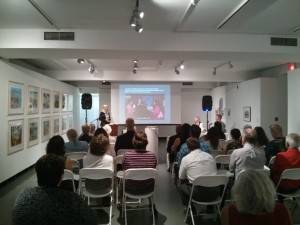 We ventured to the north of the province to attend the Art Gallery of Sudbury’s “How to Purpose Build a ‘Category A’ Museum.” This was a great opportunity for gallery stakeholders and community organizations to understand what a “Category A” museum is and what that might look like for Greater Sudbury’s future art gallery. The Sudbury Public Library and gallery are joining forces to work together on building a new facility, which city council has made a priority project. The new facility would also put the Art Gallery of Sudbury in a “Category A” designation.
We ventured to the north of the province to attend the Art Gallery of Sudbury’s “How to Purpose Build a ‘Category A’ Museum.” This was a great opportunity for gallery stakeholders and community organizations to understand what a “Category A” museum is and what that might look like for Greater Sudbury’s future art gallery. The Sudbury Public Library and gallery are joining forces to work together on building a new facility, which city council has made a priority project. The new facility would also put the Art Gallery of Sudbury in a “Category A” designation.
The session featured three guest speakers: Lisa Daniels from Alix Gallery in Sarnia, Simon Lambert from the Canadian Conservation Institute and Alexandra Badzak from the Ottawa Art Gallery. Lisa and Alexandra spoke to their own successes and challenges they faced in their recent capital projects while Simon touched on the importance of storage requirements for a “Category A” museum.
But before we recap the session, you might be wondering what is a “Category A” museum?
The term comes from the Department of Canadian Heritage’s Designation of Institutions of and Public Authorities criteria for organizations to access tax incentives and grants. Institutions such as museums, public art galleries, archives and libraries fall under this designation. Plus, a “category A” museum must have unlimited designation from one of the following groups: Objects recovered from the soil or waters of Canada, objects of material ethnographic culture, military objects, objects of applied and decorative arts, objects of fine arts, scientific or technological objects, archival material and musical instruments.
Simon Lambert’s presentation focused on the requirements for movable cultural property for a “Category A” museum. Careful consideration towards storage was a key focus point when arts organizations arrive at the design phase of their building projects. On average, a museum’s collection is 98% in storage at any given time, so it is essential to have the right space reserved or created for this purpose. There are tons more great aspects to consider when designing exhibition space too –read about the Canadian Conservation Institute’s requirements and services!
Alix Gallery in Sarnia – looking back on their capital build
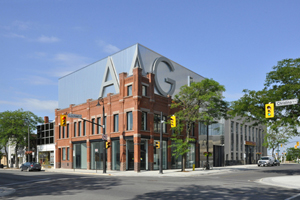 Executive Director Lisa Daniels from Alix Gallery in Sarnia offered wisdom from the gallery’s transformation into a “Category A” purpose-built gallery. The gallery first opened its doors to patrons in 1961 as the Sarnia Public Library and Art Gallery. The gallery outgrew the space and reclaimed The Thom Building (one of downtown Sarnia’s historically and socially significant buildings) to create a purpose- built facility to house a permanent collection and display premiere exhibitions. The building’s gorgeous facade has been retained and restored back its historically accurate condition. Inside, the new facility features world-class equipment and regulatory systems to maintain environmental controls necessitated by world-class artworks.
Executive Director Lisa Daniels from Alix Gallery in Sarnia offered wisdom from the gallery’s transformation into a “Category A” purpose-built gallery. The gallery first opened its doors to patrons in 1961 as the Sarnia Public Library and Art Gallery. The gallery outgrew the space and reclaimed The Thom Building (one of downtown Sarnia’s historically and socially significant buildings) to create a purpose- built facility to house a permanent collection and display premiere exhibitions. The building’s gorgeous facade has been retained and restored back its historically accurate condition. Inside, the new facility features world-class equipment and regulatory systems to maintain environmental controls necessitated by world-class artworks.
Lisa’s most significant take away for an organization starting a new build was to deliver on your promises. The classic saying goes “build it and they will come,” but that was not a trap the new gallery was about to fall into. The gallery used marketing and relevant programming to draw patrons to the remarkable new space. They also hosted a rare exhibition shortly after opening which garnered 20,000 visitors; two times their initial goal. This capital project is also a great example of how an arts organization can balance resources during the building phase. While construction work was being completed for the new purpose- built arts facility, Alix Gallery staff brought programming to the community in public spaces.
The Ottawa Art Gallery – partnerships and shared goals
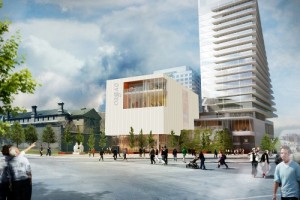 The Ottawa Art Gallery is breaking new ground when it comes to partnerships and cultural institutions with their current building project. Director and CEO Alexandra Badzak shared her goals and current project status on their new “Category A” gallery. This build has been a long time coming, with feasibility studies dating back to 2004 for the new facility. The expansion of the gallery and Arts Court Redevelopment project are part of the City of Ottawa’s downtown revitalization plan. The gallery will expand by 80,000 feet on five floors, featuring a multidisciplinary screening space that will be home to the Canadian Film Institute.
The Ottawa Art Gallery is breaking new ground when it comes to partnerships and cultural institutions with their current building project. Director and CEO Alexandra Badzak shared her goals and current project status on their new “Category A” gallery. This build has been a long time coming, with feasibility studies dating back to 2004 for the new facility. The expansion of the gallery and Arts Court Redevelopment project are part of the City of Ottawa’s downtown revitalization plan. The gallery will expand by 80,000 feet on five floors, featuring a multidisciplinary screening space that will be home to the Canadian Film Institute.
Alexandra highlights that having a business plan and storytelling are key skills for partnership – which remains at the core of the gallery’s expansion. The new space will include a hotel and condo, all sharing the same goal for this city block dedicated to arts and culture. The City of Ottawa led the process of bringing in other players for the expansion, but the gallery is harnessing the densification of Arts Court and the area of their future home. It is located in the cultural core of downtown Ottawa right beside the University of Ottawa. Alexandra emphasized how important accessibility to culture will be in this space and that they will remain free for all to visit.
The information session was an excellent way for patrons, board members and staff to compare plans for the Art Gallery of Sudbury with other capital projects around the province – with an emphasis on making their space a “Category A” facility. We are excited to hear more about the upcoming project plans for the gallery and library!



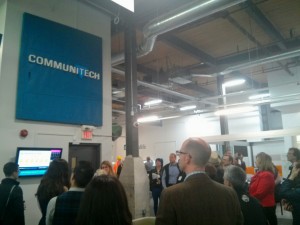
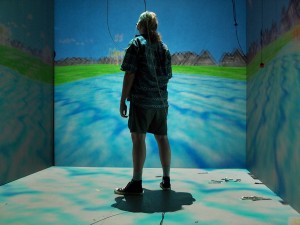 The Canadian War Museum is also embracing digital and are currently developing a
The Canadian War Museum is also embracing digital and are currently developing a 
